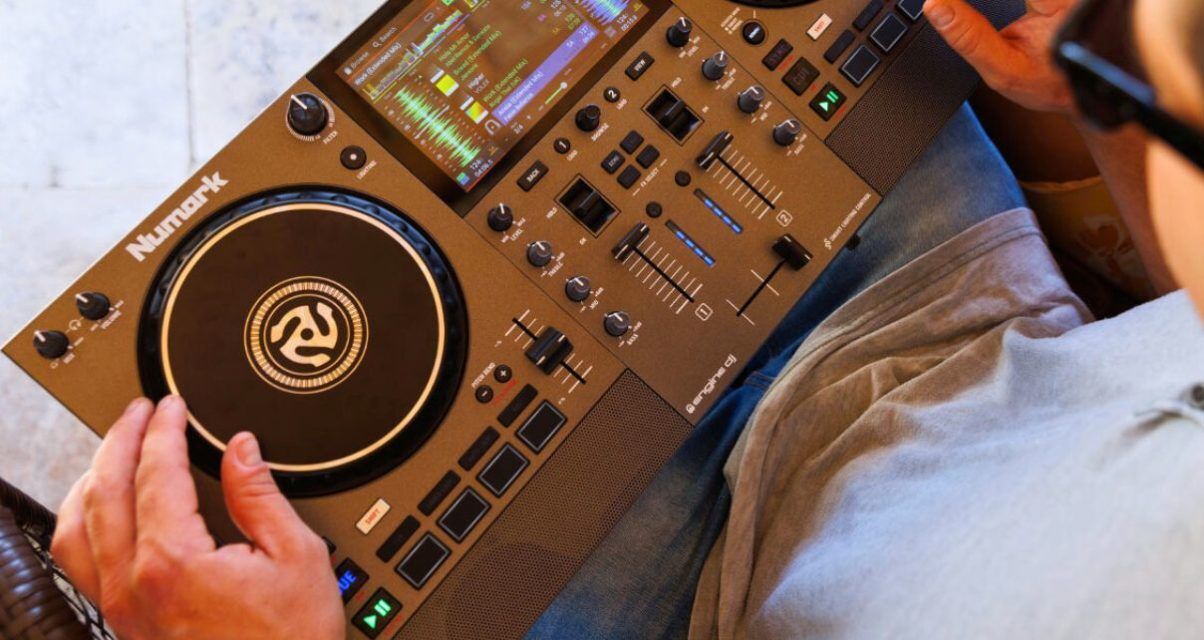Nudging the jogwheels, moving the tempo slider and using the pitch bend buttons are all ways of changing the speed of a playing track on digital DJ decks and controllers.
But what’s the difference? Recently, a few students have been asking what the nudge feature does on their DJ gear and how it’s different from other ways of altering the speed of tracks that are playing, especially because in a couple of cases, they even found they couldn’t get “nudging” to work at all!
So in this article, we’re going to go into the difference between nudging a track (I’ll explain what this means in a second), using the tempo slider, and using the pitch bend controls, should you have them. I’ll explain exactly when they’re used and why, and why nudge (in particular) may seem like it’s doing nothing…
What Is Nudge?
So firstly, what is nudge? It comes into play when you’re playing a track and you push the edge of the jogwheel to change the speed of that track. With most modern jogwheels that don’t actually rotate unless you move them (we call them “static” jogwheels, as opposed to motorised ones), for the most part, things are still set up to work as they did when playing records back in the vinyl days.
Read this next: Know Your Jogwheels – Which Type Is Right For You?
Further learning
Speed controls not working? If you’re having issues with certain functions on your DJ gear (nudge, sync, pitch control, etc), there’s always a reason for it, and in this live lesson replay we talk you through the fix!
So while when you touch the top of the jogwheel it stops the music playing and you can scratch, spin it back and so on, when you touch the edge (which is the equivalent of touching the edge of the actual platter, not the vinyl record, back in the turntable days), something more subtle happens. By pushing away from you (or clockwise) it will speed the track up, and by pulling towards you (moving the platter counter-clockwise), it will slow the track down.
But there are two crucial things to know here: Number one is that it’s temporary – it’s only for as long as your finger is in contact with the jogwheel. As soon as you remove your finger, the pitch goes back to where it was before. Number two, there’s actually one big reason why when you’re doing this it might sound to you like nothing’s happening at all!
So we’ll get on to that reason in a second, but first, let’s cover why you’d want to use this feature to momentarily speed up or slow down a playing track. It’s mainly for manual beatmixing, and it’s used to get two tracks’ beats to line up. When the tracks are close enough to each other, a little nudge in one direction or the other is often all it takes for the beats to finally line up and everything to lock into place.
Get the skills
We teach manual beatmixing thoroughly in our Complete DJ Course. It’s pretty much an essential skill to have! Although nowadays you don’t have to be perfect at it, all DJs can benefit from knowing how to do this.
It’s a bit like knowing what happens when you move the controls of a pro camera off automatic and start using all the manual features.
Key lock
So to that conundrum: When nudging, why are there times when you can’t hear anything happening? Well, the big reason is another feature on modern DJ gear, which is excellent but can confuse the novice because it disguises the audible effect of nudging. It’s called “key lock”.
All DJ gear nowadays has a key lock feature (it’s sometimes called “master tempo”) and it’s designed to let you change the tempo of a track without the pitch going up or down. In other words, you can speed a track up and it won’t get higher in pitch, and you can slow it down and it won’t get lower.
This can be very useful to keep a track sounding natural when you move it away from its original tempo. However, one side effect of it is that it kind of hides what the nudge control is doing. The track is momentarily speeding up (or slowing down), but key lock is holding the pitch steady so you don’t really hear it.
If you feel like your nudge controls aren’t doing anything, then turn off key lock or master tempo and then have a go. You’ll soon hear what’s happening, and once you’re convinced that it’s working as it should, you can turn it on again (because having key lock on is usually a good idea for beginner DJs).
So if nudge is there to temporarily speed up or slow down a track, let’s quickly go over what the other speed controls on your DJ gear do.
Tempo slider
We’ve already touched on the tempo slider, which is to the right of the jogwheels. Pushing this big slider upwards (or away from you) will slow the track down, and pulling downwards (or towards you) will speed the track up. But the crucial difference from nudging is that it’s permanent. The track will stay at that tempo. You can watch the BPM counters on your gear or laptop screen and you’ll see that they’ll move up or down and stay where they are moved to.
Learn to DJ with us: The Complete DJ Course
These two features – the tempo slider and jogwheel nudging – are actually used together in manual beatmixing, as touched on before.
Pitch bend
Some DJ gear, though, has a third tempo control on it called “pitch bend”. This is actually a pair of buttons, which are typically right underneath the tempo slider. If you own a Denon DJ Prime 4, for instance, you’ll have seen these, but they appear on some other modern gear as well.
There’s no mystery here: these do exactly the same thing as nudging the edge of the jogwheel. Pressing the left-hand button will temporarily slow the track down, and pressing the right-hand button will temporarily speed it up. But why do this when you can just nudge the jogwheel?
The main reason is that on old-fashioned CD players it was not possible to nudge in the way that you can on modern jogwheels, and so these were the controls DJs used to achieve that. So in a way, they’re a hangover from those days. Some DJs, for whatever reason, prefer to use them rather than nudging the edge of the jogwheels, and thus some manufacturers leave them there. If that’s you, that’s what they are there for.
Finally…
And that’s it – the difference between the nudge feature, the tempo sliders and the pitch bend controls on DJ gear, what they’re used for, and what to do if you think your nudge controls aren’t doing anything.
Just one final word: If you’re using sync (which is of course like the “automatic” setting I was talking about on modern professional cameras) to do everything for you when it comes to beatmixing, then the whole point of that feature is that you don’t really need to use these controls regularly at all. In that instance, if you’ve got two tracks synced, these controls often may very well do nothing, because they’ve been disabled by sync – so turn sync off if you’re experimenting with them.
Read this next: “I’m New To DJing, Is It OK To Use Sync?”
For more information on the basics of how to beatmix tracks and indeed what all the controls on your DJ controller do, check out our Complete DJ Course.


